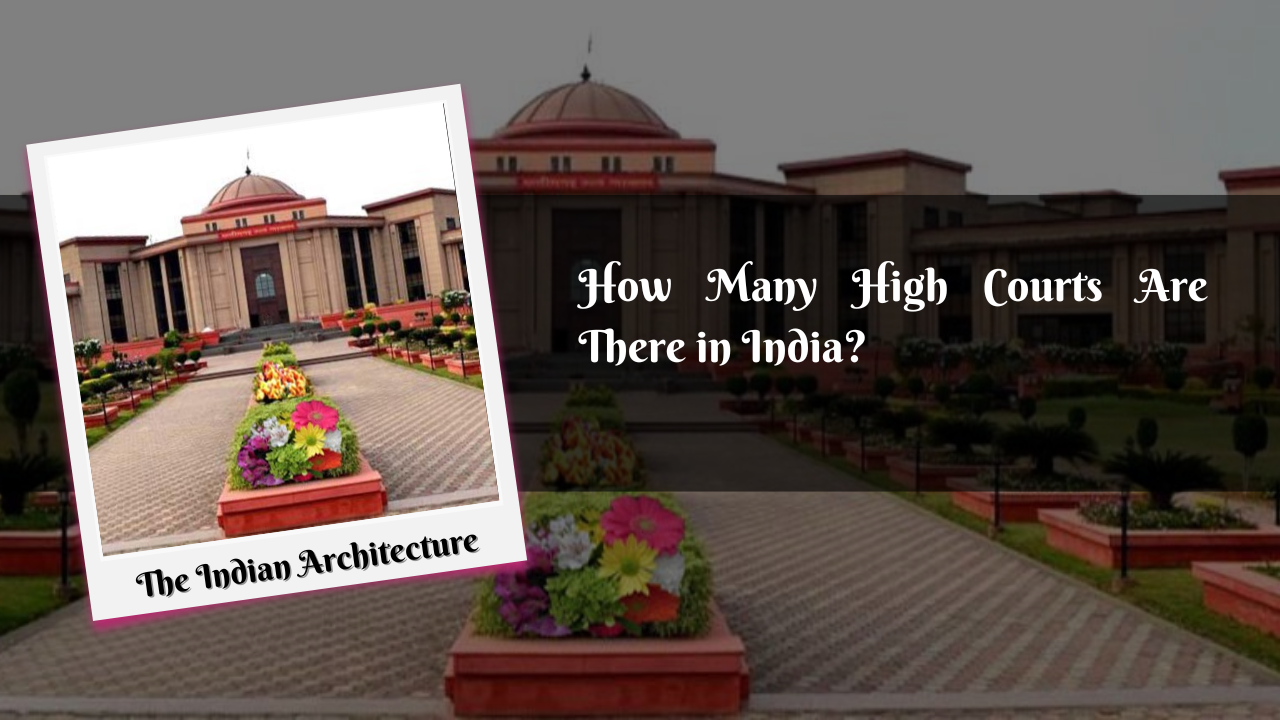How Many High Courts Are There in India?

In India a High Court is the principal civil and criminal court of a state or Union Territory. It is the highest court at the state level, just below the Supreme Court of India in the judicial hierarchy.
The Head of a High court is appointed by the President of India (after a consultation with the Chief Justice of India and the Governor of the State), known as Chief Justice of the High Court. They are held responsible for Overseeing functioning of the entire court and its subordinate judiciary, assigning judges to benches, and also preside over the important or constitutional benches.
Under Chief Justice Puisne Judges’ work, who are also appointed by the president, the number of judges depends on the workload and the size of the state.
Each High court supervises many lower/subordinate courts
- District Court
- District Munsiff Court
- Courts of Judicial Magistrate of First Class
- Court of Judicial Magistrate of Second Class
- E-courts
As of 2025 there are a total 25 High courts in India
It is common for every state to have a High court of its own, but India has 28 states and 8 Union territories which, that is several High Courts in India, have jurisdiction over more than one state or Union Territory.
The High courts that have multiple jurisdictions are:
Bombay High Court (Mumbai)
Bombay High court is one of the three chartered High Courts along with Calcutta and Madras, established in pre independent India, now it has Jurisdictions over:
- Maharashtra
- Goa
- Union Territories of Dadra and Nagar Haveli & Daman and Diu
Guwahati High Court
- Guwahati High Court has Jurisdiction over most number of states among all the high courts.
- Assam
- Nagaland
- Mizoram
- Arunachal Pradesh
Kerala High Court (Ernakulam)
- Kerala
- Union Territory of Lakshadweep
Madras High Court (Chennai)
- Tamil Nadu
- Union Territory of Puducherry
Punjab and Haryana High Court (Chandigarh)
- Punjab
- Haryana
- Union Territory of Chandigarh
Calcutta High Court (Kolkata)
This is among the 5 oldest courts in India, and also the First High Court to be established in India under the Indian High Courts Act, 1861. This High court holds Jurisdiction over:
- West Bengal
- Union Territory of Andaman and Nicobar Islands
What does the High Court do in India?
A large portion of High courts’ work in India includes appeals from lower courts and writ petitions in terms of Articles 226 and 227 of the Constitution. Writ Jurisdiction is also the primary function of the High courts.
In addition to this High court also supervises and controls the other subordinate courts that falls under its authority. This also implies that decisions of a High Court are binding on all subordinate courts within its jurisdiction.
There are three types of benches for High Court,
· Single Bench (one judge) – For bail, writs, civil cases
· Division Bench (2 judges) – For appeals and complex matters
· Full Bench (3+ judges) – For constitutional questions or conflict in judgments
But depending on the state and work, the number of judges in a High court vary, from Allahabad High Court ranking the highest with 160 judges to Sikkim High Court with only 3 judges.
Judiciary stands as an important pillar of democracy, it checks the legislative safeguarding the rights of citizens, it also oversees executive actions. By doing so it maintains a balance of power.
Also Read:
